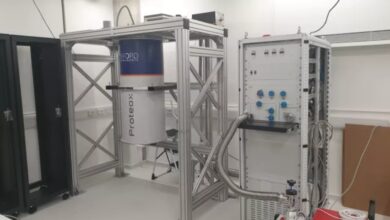Proba-3 Mission: New Satellites to Simulate Solar Eclipses for Scientific Research

Exciting developments in space technology have emerged with the launch of a new pair of satellites designed to create artificial solar eclipses on demand. This innovative mission, led by the European Space Agency (ESA), aims to enhance our understanding of solar phenomena and provide unique opportunities for scientific research.
Mission Name: The project is known as Proba-3, which stands for Project for On-Board Autonomy. It involves two satellites that will work in tandem to block the sun’s light, simulating an eclipse.
Formation Flying: The satellites will fly in precise formation, maintaining a distance of just a few meters apart. This formation is crucial for creating the desired eclipse effect, allowing scientists to observe the sun’s corona and other solar features without interference from sunlight.
Duration of Eclipses: Each artificial eclipse created by the satellites is expected to last up to six hours, providing ample time for observations and data collection.
Launch Details: The satellites were successfully launched from India on December 5, 2023, marking a significant milestone in space exploration and technology.
Scientific Applications: This mission will not only allow for the study of solar phenomena but also has potential applications in various fields, including astronomy and climate science. By simulating eclipses, researchers can gain insights into solar activity and its effects on Earth.
The Proba-3 mission represents a remarkable advancement in satellite technology and opens new avenues for scientific exploration. As these satellites begin their operations, the scientific community eagerly anticipates the wealth of data and discoveries that will emerge from this groundbreaking project.




